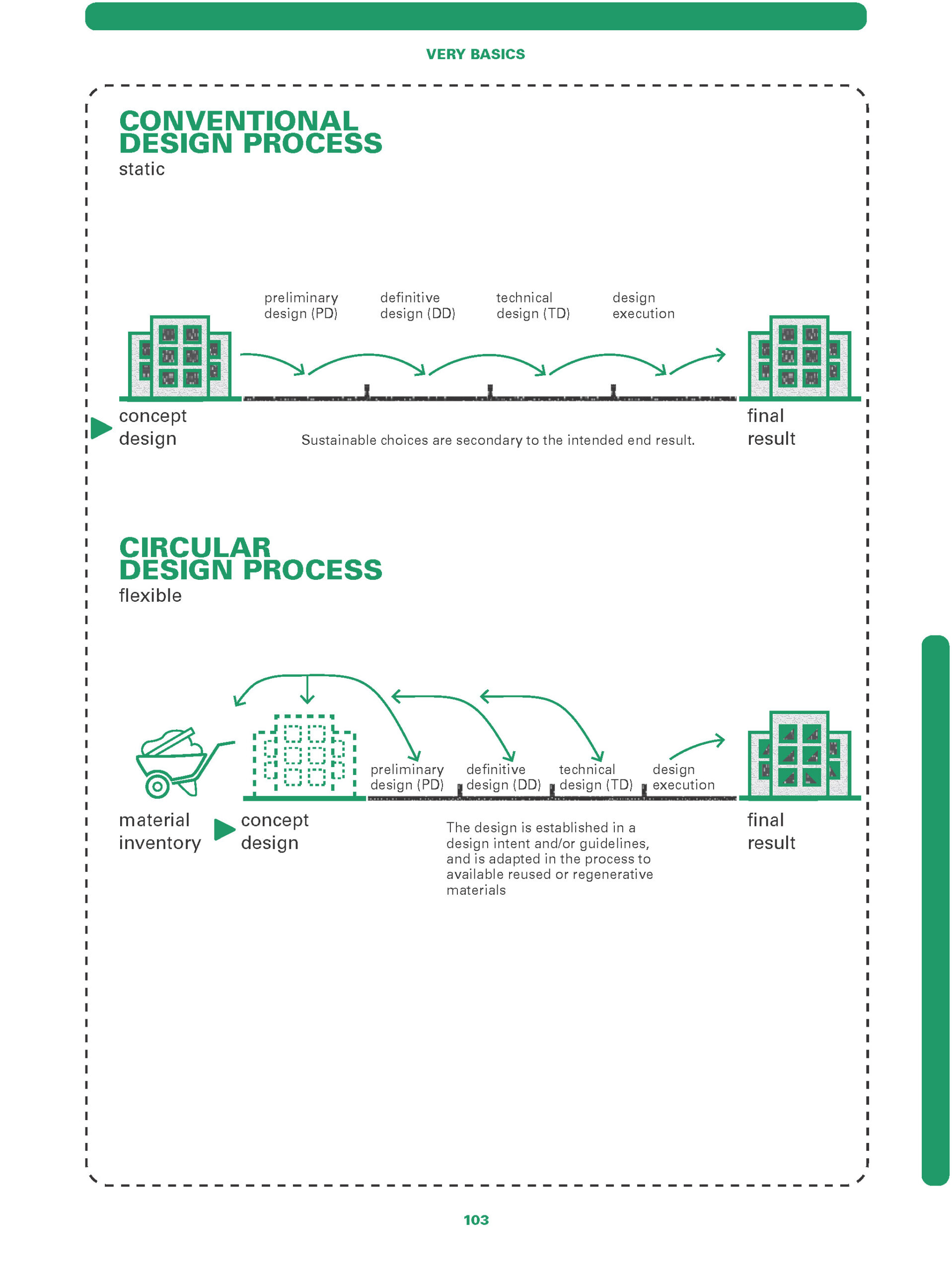VERY BASICS 6: THE CIRCULAR DESIGN PROCESS
One of the most critical aspects of circular design lies in how its design process is fundamentally restructured. Unlike the conventional approach where designers typically initiate the design concept from scratch, often with only a rough consideration of the site or existing resources, circular design mandates the establishment of a material inventory documenting available materials before embarking on the concept design process. While this may be perceived by some as limiting the creative potential of design, circular design, in fact, demands heightened creativity from designers, as it necessitates flexibility right from the outset.
Secondly, it’s very important to involve the construction team much earlier on in the process to understand the specific production conventions they use (such as sheet sizes, fabrication tools, module dimensions).
Finally, designers must be willing to relinquish the rigidity of construction design documents. They should allow for on-site deviations in their designs to enhance builders’ flexibility in reusing elements from existing stock. This also encompasses agreements with the client regarding final delivery conditions, acceptance of second-hand materials, and, at times, the absence of warranties. However, this is no simple feat; it necessitates the establishment of trust-based partnerships and prior agreements on potential deviations to ensure the delivery of high-quality work.
